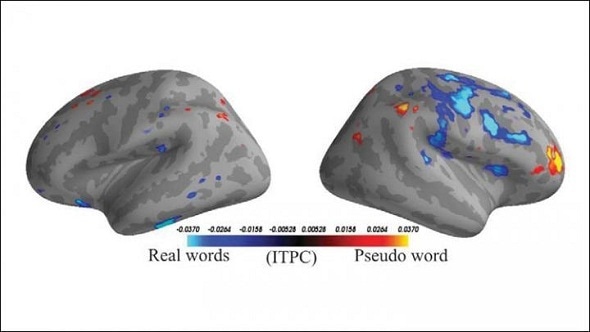Pairing machine learning with neuroimaging can determine whether a person heard a real or made up word based on their brain activity, according to a new study published in eNeuro. These results lay the groundwork for investigating language processing in the brain and developing an imaging-based tool to assess language impairments.

Many brain injuries and disorders cause language impairments that are difficult to establish with standard language tasks because the patient is unresponsive or uncooperative, creating a need for a task-free diagnosis method. Using magnetoencephalography, Mads Jensen, Rasha Hyder, and Yury Shtyrov from Aarhus University examined the brain activity of participants while they listened to audio recordings of both similar-sounding real words with different meanings and made up "pseudowords." The participants were then instructed to ignore the words and focus on a silent film.
Using machine learning algorithms, the team was able to determine when a participant was hearing a real or made up word, a grammatically correct or incorrect word, and the word’s meaning based on their brain activity. They also identified specific brain regions and frequencies responsible for processing different types of language.
Source:
Journal reference:
Jensen, M. et al. (2019) MVPA analysis of intertrial phase coherence of neuromagnetic responses to words reliably classifies multiple levels of language processing in the brain. eNeuro. doi.org/10.1523/ENEURO.0444-18.2019.